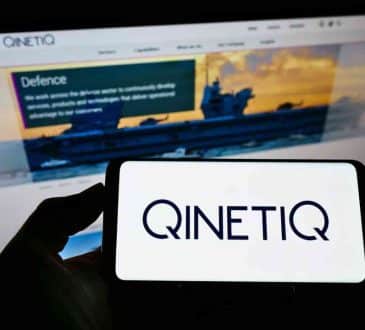The Great Resignation: How to Proactively Address the WorkQuake Now

The busy roadside Burger King marquee announced, “WE ALL QUIT. SORRY FOR THE INCONVENIENCE.”
This is a cautionary signpost for leaders of our time. As companies struggle with the uncertainty of hybrid model shifts in the return to work, one thing is certain — employees are leaving. News headlines have been fixated on “The Great Resignation” and turnover contagion. In fact, 95% of workers are currently considering changing jobs and 92% or willing to switch industries to land a new position, according to a recent survey by career site by Monster.
While there is no one cause, there seems to be a perfect storm of challenges including lack of childcare and school closures, COVID-19 and Delta variant risk, and the general realization that there may be a better way to achieve a work/life balance that addresses both physical and mental health concerns. On top of that we have the ever-present social and political unrest and bias in hiring, promotions, and compensation. All of this has led to burnout in an unprecedented time of boundary-less work intrusion into home life and 24/7 technology.
Few of these issues are actually new — the pandemic changed our routines and enabled a hyper-focus to take clear note of what is happening around us, including justice and equality, politics, health concerns, work/life integration, and level of relationship satisfaction with everyone in our life — including our bosses.
So what does this flash point mean for organizations? Pay attention because this is powerful window of opportunity, when everyone is primed for imminent change and seeking greater personal agency. Leaders can seize this moment for good and make big shifts in people strategy that position their companies for strength and success in the future.
Here are 3 human capital areas organizations and leaders should be addressing now to ensure they are prepared to take advantage of this next wave of change:
1 – TALENT RETENTION: What are we doing to engage and retain our top performers?
- Do you know who they are? Understand how well you’ve identified your top performers, and ensure you’ve recently validated the criteria for getting on your list (Bias alert: it shouldn’t be about face time, or you run the risk of proximity bias.) Recently, one of my clients sheepishly confided that they would like to invest in the career development of their high potential employees, but they have no system in place to identify them (we are working together on a solution). Surveys suggest that most companies do have top talent lists — but that even with such programs, companies only spend 10% of their time developing high potentials. Talented employees are “force multipliers”, and investing in these people will produce the highest ROI. To identify your top performers, use 360 reviews, personality assessments and performance results to evaluate along three key criteria: ability, social skills, and drive.
- Conversations are key: Before heading back to the office, or even if you don’t have a return date, start preparing for the change now. You should be building relationships now so you have a strong baseline of trust, before something happens that needs to be addressed. Managers should schedule a 1:1 check-in conversation with each of their employees that are dedicated to the pending shift. Review performance results to goals over the past 18 months, and discuss any obstacles faced. Ask about career aspirations, openness to new work assignments and projects that may become available. Ensure you understand each employee’s future interests so you can co-create a career development plan that engages and excites your team members. Inquire whether there are any work-from-home or scheduling accommodations that may need to be negotiated, and balance empathy with professional boundaries. (Pro Tip: Don’t agree to any special arrangements yet — your goal is to listen and learn, and check with HR on current policy prior to making agreements with employees). For the executive team, it is especially important to make sure your people managers receive this same attention with regard to their career development aspirations. Give them the feedback, appreciation and leadership tools they need to lead.
- Future proof your hiring, pay and promotion practices to ensure they are equitable and meet current best practices. For hiring, ensure your recruitment outreach includes a diverse candidate pool (and with remote work, you could hire from anywhere!) and a consistent, objective interviewing process. For pay equity, conduct a pay equity audit and checkups every couple of years thereafter. Lastly, review your promotion criteria. Are they objective and well-defined? Can you easily articulate why you’d promote one person over another, and help coach the non-promoted on a pathway for the future? This will help you retain and keep developing your key talent as well mitigate the potential for inherent bias.
2- WORKPLACE CULTURE: Is your workplace culture a positive and active force in serving your collective goals and objectives?
- Modernize your workplace policies. Be proactive in anticipating the variety of issues that are likely to occur with a return to work, such as politics in the workplace, health and safety reminders for in-person work, requests for leave, pre-planning for ongoing changes and impact from the pandemic including work from home preferences, and setting healthy boundaries around work hours and collaborative technology use (especially critical for global roles, where time zone coverage can drive unhealthy working conditions). Add to the list of scenarios to contemplate by asking your managers and HR for a list of the most common issues to date. Have your policies in place before you need them. By doing so, you avoid perceptions of favoritism, morale issues, and potential claims of discrimination. Always underpin policy changes with a strong communications plan and support staff that make it easy for employees to understand what is expected and who they can safely turn to with questions or concerns.
- Revisit your company norms. Hybrid work combined with differing work hours can be challenging for any team to align and achieve goals. Plan ahead to ensure issues and decisions are discussed and shared with full team engagement. This is an opportunity for a reset to discuss the company and team norms that are needed for success in this next phase so that everyone knows what is expected. For example, your team may agree that a consistent cadence of communication is a team norm, and for defined behaviors, agree to a biweekly team meeting schedule and weekly team status report sent via email.
- Evaluate your HR bench strength. Companies need to rely on a talented and empowered HR function to gracefully navigate the next phase of work, retain good employees, coach and develop leaders (especially on how to effectively manage and coach remote and hybrid teams), and address potential ethical and compliance risk. A weak HR function will have a disproportionately negative scaling impact on organizations in the near-term. Check in with your CHRO — are they current with leading company best practices? Are they coming to you proactively with turnover and other data, and solutions? What are their needs and how can you help remove obstacles?
3 – Organizational Design: Are you aligned to execute over the near-term?
- Structure determines outcome. Picture your company ten years from now. Consider technology, business cycles, the maturity of your company and potential risks. What trends will impact your future? How is your company’s business model currently being challenged? Think of your target client market and the dimensions you compete in now. Is that value proposition sustainable in the future? What problems will your customers have in five years that they will pay you to solve? Once you have some answers, consider whether these are things you should be working towards now, and the talent structure you need to drive this strategy.
- New opportunities can overcome challenges. People have never been more open to change; check in with them. Are they bored? Excited? Burned out? According to one study, 48% of employees are “rethinking the type of job they want altogether” and in another, 80% are seeking career development and new skills. This can be an exceptional opportunity to give some people more — or less — or different — responsibilities. One of my clients is using the results of their 1:1 employee check ins to help design their revised organizational design — and the early results indicate that employees having a say in the structure is positively impacting morale.
- Make the tough calls now. In Q3, have kind and direct conversations with employees who are underperforming or whose roles have been outgrown by the company. You may find it’s best to combine some functions and tweak or eliminate others. This is an opportune time for an honest, thoughtful and clear conversation about fit and future with your company. Don’t wait until Q4 — the holidays — which is a time of intense emotion for many already, and a poor time for a job hunt (the job market traditionally hardens from Thanksgiving through February).
Most have realized we are not returning to things the way they used to be whether we go back to the office or not — and this brings tremendous opportunity. These solutions are not a one-time fix, but require a long-term commitment to rethinking the modern work contract between employer and employees. Use this time to proactively put measures in place and initiate a dialogue with employees that will position your company to retain and attract top talent, limit risk and thrive gracefully during this next period of upheaval.
Written by Amii Barnard-Bahn.
Add CEOWORLD magazine to your Google News feed.
Follow CEOWORLD magazine headlines on: Google News, LinkedIn, Twitter, and Facebook.
This report/news/ranking/statistics has been prepared only for general guidance on matters of interest and does not constitute professional advice. You should not act upon the information contained in this publication without obtaining specific professional advice. No representation or warranty (express or implied) is given as to the accuracy or completeness of the information contained in this publication, and, to the extent permitted by law, CEOWORLD magazine does not accept or assume any liability, responsibility or duty of care for any consequences of you or anyone else acting, or refraining to act, in reliance on the information contained in this publication or for any decision based on it.
Copyright 2024 The CEOWORLD magazine. All rights reserved. This material (and any extract from it) must not be copied, redistributed or placed on any website, without CEOWORLD magazine' prior written consent. For media queries, please contact: info@ceoworld.biz
SUBSCRIBE NEWSLETTER








